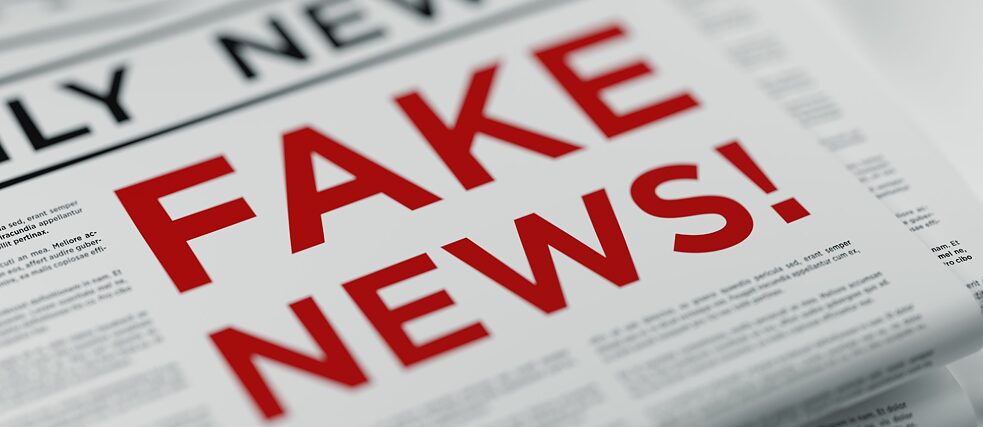Understanding Fake News
Understanding the Fake News Phenomenon

Fake news. The big problem that the media has been harping on for quite some time now is constantly downgrading the quality of news itself. But what exactly is fake news and why is it being created?
By Anindita Sen and Biswajyoti Banerjee
A massive earthquake in a faraway land has shaken the headlines with its devastation. Image after image of the death and destruction is flooding the social media news feeds and in turn, the news web portals. Like many others, you have been sharing them too. And in some time, the netizens figured out that they were not of this earthquake, but of some old calamity in some other country! Well, this is exactly how misinformation keeps contributing to the abundance of fake news these days.
Fake news plagues traditional news avenues and is perpetuated on social media, misleading readers or audiences with erroneous content. But what exactly is fake news and why is it being created?
How do I know it’s fake?
In some cases, a reporter’s confusion, or inability to cross-check information can result in wrong or false content. This is known as misinformation. It often rises from mistakes, misinterpretations, or the dissemination of outdated information.
Fake news consists of false stories created to deliberately misinform readers, that are spread on the internet or using other media. Remember the last time you read that a beloved celebrity was no more, only to check on Google to find that it was a wrongfully circulated rumour? That can be considered fake news.
Fake news can be used to manipulate minds by various means, from influencing political views to playing pranks on readers as a joke. Inaccurate or false news is aimed to sensationalise something or someone, and garner attention. It may also be generated out of desperation to go viral on social media.
When misinformation is used as a weapon to mislead, manipulate, hoodwink or damage the reputation of an individual or an entity, it is called disinformation. Social media discourse on the right to free speech, look-alikes of popular news websites to sell hoaxes, paid communications and promotional content have been dangerously instrumental in the whole game.
The changing newsrooms
In this era of high-speed internet, smartphones, and rapidly increasing digital platforms, news organisations are evolving their formats.
CNN, a traditional broadcaster, these days sends out information as short posts on X (Twitter) to reach out to a greater audience. Some of the traditional newspapers now have corresponding apps where podcasts also act as news mediums. Meanwhile, Bot reporting is gradually gaining a foothold too. Thus, newsrooms these days mostly have a 24x7 format with competition levels rising every day.
The fake news bubble
With a constant hurry to serve breaking news and sensational content to ensure higher views, one must be discerning as to which news houses fact-check, and which don’t - particularly when it comes to digital news. Adding to the mess is the increasing reliance on social media platforms like Twitter, Facebook, Instagram etc. as news sources.
According to a 2023 global overview report mentioned in this UN Whitepaper OUR COMMON AGENDA POLICY BRIEF 8: INFORMATION INTEGRITY ON DIGITAL PLATFORMS (Page 8), 3 billion people use Facebook, YouTube has 2.5 billion users, while WhatsApp and Instagram each have 2 billion users worldwide. The content being shared on these platforms daily is not just a source of news, but instant opinions, judgements and debate. It takes just a few clicks to spread fake news and take the internet by storm, especially when it contains disinformation that resonates with a majority audience. This creates a snowball effect as more shares create the illusion of legitimacy, causing more readers to fall into the trap.
The search for the solution
In his Introduction to Mass Communication - Media Literacy and Culture (Chapter 1, Pg 17), Stanley J. Baran questions – “Are we more or less powerless in the wake of advances such as the Internet, the World Wide Web, and instant global audio and visual communication? If we are at the mercy of technology, the culture that surrounds us will not be of our making, and the best we can hope to do is make our way reasonably well in a world outside our control.”
Undoubtedly, filtering out fake news from the system requires the newsmakers to take charge. The abundance of fake news already has the alarm shrieking. Relying on every available content is not a good idea anymore. However, the onus lies a lot on the other side too. As readers and audiences, we need to practise our own fact-checking and critical thinking to fight misinformation and disinformation.
Keep in mind that while reputed news houses tend to draw from reliable sources, content aggregators may place less importance on where their information comes from. Be aware of news sources and cross check everything you read on the internet with credible disseminators.
By developing a habit of critical thinking and fact-checking, you can become more adept at identifying fake news and making informed decisions about the information you encounter.